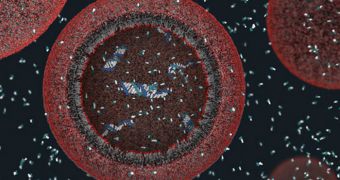Investigators at the Cornell University present new evidence that clays may have represented the birthplace of life here on Earth. In a recent paper, biological engineers argue that the complex biochemicals underlying the development of life would have found a safe haven in these materials.
The work was published in the November 7 online issue of the journal Scientific Reports, and was led by expert Dan Luo, who is a member of the Kavli Institute, He is also a professor of biological and environmental engineering at the university.
The scientist and his team say that clays provided the necessary confinement for organic molecules early on in our planet's history. Many scientists agree that the earliest protocells did not feature a cellular membrane, and that this function was most likely fulfilled by other materials.
In addition to housing the molecules properly, the hydrogel in clays may have also provided a suitable place for the biochemical reactions that eventually led to the development of more complex biological structures, Astrobiology Magazine reports.
The investigation focused on analyzing how clays would act when dipped in ancient seawater. The team determined that this would lead to the formation of a hydrogel, which is basically a material that features numerous microscopic cavities, which make it look like a sponge.
Luo argues that these spaces provided enough protection for biomolecules as they reacted with each other over prolonged periods of time. As these reactions became increasingly complex, they eventually led to the emergence of proteins, DNA, and other cellular components.
Without clay hydrogels, these processes would have been exposed to the harsh conditions of early Earth and would have most likely not culminated in the development of cellular membranes.
At this point, the research group is working on understanding why these clay hydrogels work so well in supporting biochemical reactions. A deeper understanding of these processes could lead to improvements in cell-free protein production, with additional applications in medical sciences.
Another direction of research is figuring out how the earliest cellular components evolved after they found shelter inside hydrogels. This could help biologists explain the origin of life in more detail.

 14 DAY TRIAL //
14 DAY TRIAL //